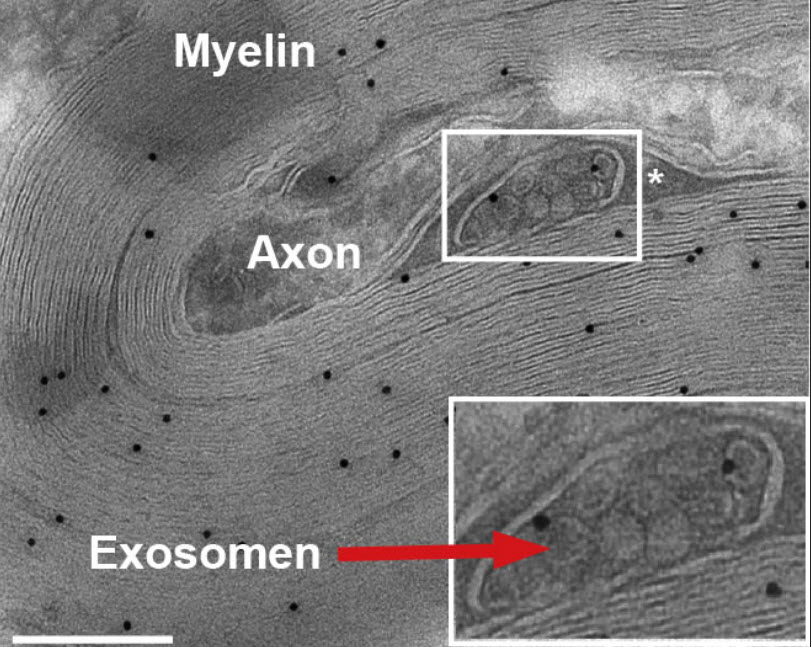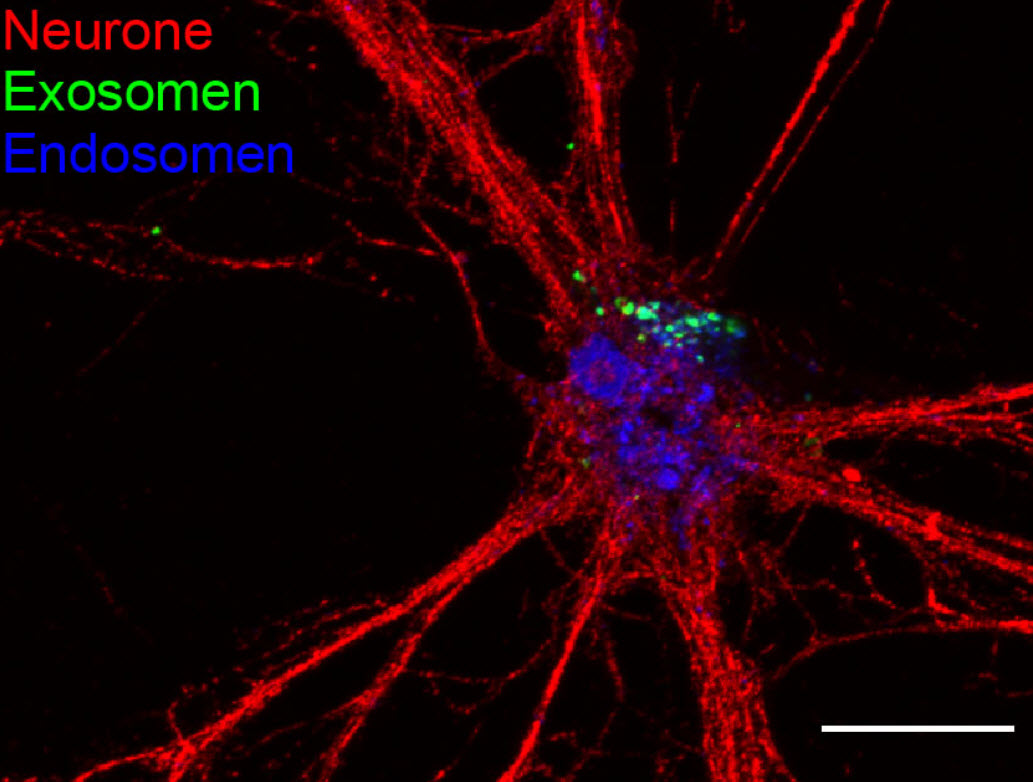New mode of cellular communication discovered in the brain
July 18, 2013

Exosomes (“exosomen” in German) are small vesicles that contain proteins and nucleic acids. They are commonly present in close proximity to nerve cell axons, where they are ideally positioned to supply protective substances. Scale bar: 50 microns. (Credit: Institute of Molecular Cell Biology)
Johannes Gutenberg University Mainz (JGU) researchers have discovered a new form of communication between neurons and neighboring of a specific type of glial cells: a transfer of protein and genetic information, protecting neurons from stressful growth conditions.
Oligodendrocytes, a type of glial cell, serve several functions.
They form an insulating myelin sheath around the axons of neurons. If this support becomes unavailable, axons can die off. This is what happens in many forms of myelin disorders, such as multiple sclerosis, and it results in a permanent loss of neuron impulse transmission.
In addition, they secrete small vesicles (membrane-enclosed transport packages) called exosomes that contain ribonucleic acids (genetic information), in addition to lipids and proteins. In response to neuronal signals, these exosomes are taken up by the neurons and their cargo can then be used for neuronal metabolism.
The release of exosomes is triggered by the neurotransmitter glutamate. By labeling them with reporter enzymes, the researchers demonstrated that the exosomes are absorbed into the interior of the neurons.
“The entire package of substances, including the genetic information, is apparently utilized by the neurons,” said study leader Dr. Eva-Maria Krämer-Albers. If neurons are subjected to stress and are aided by the exosomes, they subsequently recover. “This maintenance probably also leads to de novo synthesis of proteins.”
Among the substances present in the exosomes are protective proteins such as heat shock proteins, glycolytic enzymes, and enzymes that counter oxidative stress.
In the future, the researchers hope to develop specific exosomes that could be used in the treatment of nerve disorders.

An exosome absorbed into a neuron (becoming an endosome), where it helps protect neurons against stress. Scale bar: 20 microns. (Credit: Institute of Molecular Cell Biology)
